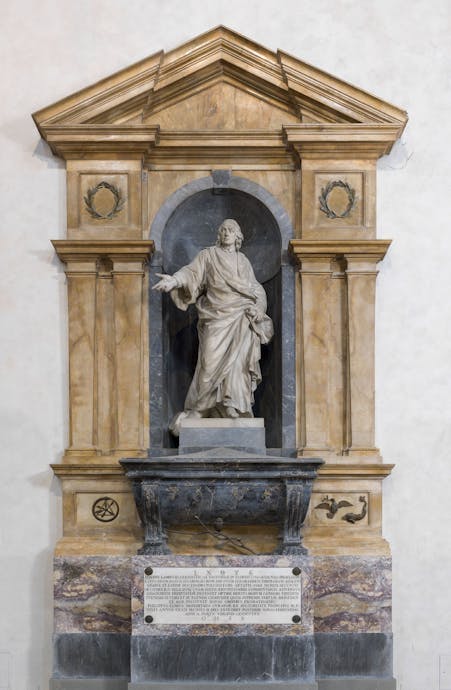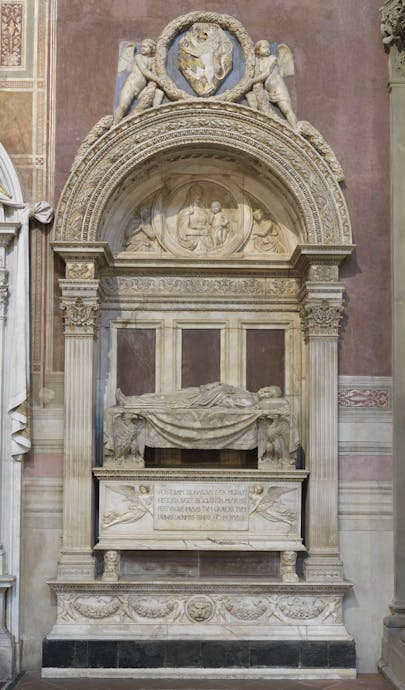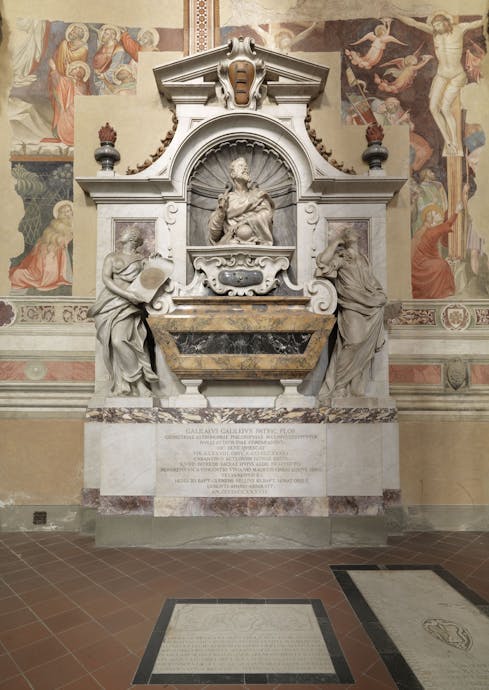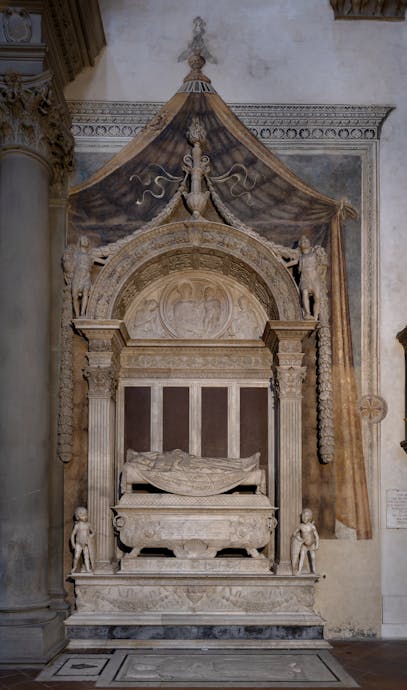Bravo!
Now you have found the treasure, find out more about the artworks
Symbols and allegories
A
Vittorio Alfieri’s monumental tomb, in the south aisle of the basilica, was carved by Antonio Canova between 1804 and 1810. Canova chose a different approach from the other monumental tombs in Santa Croce. Instead of carving muses (the Greek and Roman goddesses of the arts and sciences), he decided to show Italy weeping over the loss of her great playwright and author. Alfieri’s greatness is illustrated by a handful of details such as the lyre and laurel wreath representing poetry, and the masks on the corners of the tomb’s lid symbolising the theatre.

B
Giovanni Lami’s monumental tomb, carved by Innocenzo Spinazzi between 1772 and 1775, is in the basilica’s north aisle. Lami was famous for his work as a historian and librarian, and the bronze animals on his tomb are meant to symbolise his talents. Unfortunately, the sculptor did not leave any written instructions to help us interpret his work, but it’s highly likely that the dolphin symbolises a quick mind, the dove a peaceful temperament, and the owl wisdom.

C
Bernardo Rossellino carved the Monumental tomb of Leonardo Bruni, a chancellor of the Florentine Republic, between 1445 and 1450. The tomb stands in the basilica’s south aisle. This was the work of art that set the standard for monumental tombs typical of the Florentine Renaissance, i.e. tombs usually set vertically against the wall of a church. The overall effect is often pretty impressive because the aim was to honour the memory of illustrious figures, whose qualities and talents are illustrated with inscriptions and decorations.

D
Galileo Galilei‘s monumental tomb, designed by Giovanni Battista Foggini and his son Giulio, and officially inaugurated in 1737, is in the basilica’s north aisle. It took almost ninety years to get a tomb built for Galileo in the basilica. When the great scientist died in 1642, his body was buried in a small room in the Medici chapel at first, because he’d been a “controversial” figure who propounded scientific theories that were different from the theories accepted by the Roman Catholic Church at the time. His tomb is adorned with a portrait of him and with statues of his muses, Astronomy and Geometry.

E
Gioacchino Rossini‘s monumental tomb, carved by Giuseppe Cassioli between 1900 and 1902, is in the basilica’s south aisle. To honour Rossini’s talent, Cassiloli carved a lot of details associated with music on the tomb. You can see violin clefs, a tuning fork and violin bridges and pegs. Rossini was one of the world’s most famous composers in the first half of the 19th century and he made a huge contribution to renewing opera.

F
Carlo Marsuppini’s monumental tomb, carved by Desiderio da Settignano between 1454 and 1459, is in the basilica’s north aisle. Desiderio drew his inspiration from the tomb that Bernardo Rossellino had created for Leonardo Bruni just across the church in the opposite aisle, but his design was richer because he added a lot of symbolic elements that make the decoration far more detailed.
